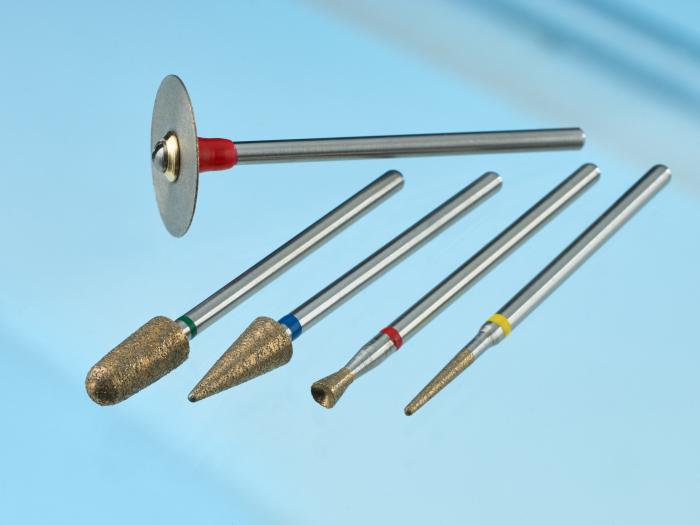Maintaining dental tools, including burs, discs, and other abrasive tools, is an essential part of dental practice. Residual polishing paste or composite material can build up on these tools over time, leading to reduced effectiveness, contamination, and other potential risks. Here are some of the most common questions people have been asking recently about removing residual material from dental tools, and some best practices for maintaining these tools to ensure their longevity and effectiveness.
Removing Residual Material from Dental Tools: Best Practices and Methods
One of the best methods for removing polishing paste residue from diamond burs is to use a brush and high-speed handpiece. The brush should be made of a soft material such as nylon, and the handpiece should be set to an appropriate speed for the type of bur being used. The brush should be applied to the bur in a circular motion, with light pressure, until all the residue has been removed. For composite material on abrasive discs and points, it is important to be gentle and avoid damaging the surrounding tooth structure. One effective method is to use a scaler or curette to carefully scrape away the material, taking care not to apply too much pressure or damage the surface of the disc or point.
For stubborn or hard-to-remove residue, specialized solvents or cleaning agents can be used. These may include alcohol, acetone, or other solvents that are safe for use on dental tools. It is important to follow the manufacturer's instructions when using these products, and to rinse the tools thoroughly after use to remove any remaining solvent.

Cleaning and Disinfecting Dental Tools: Preventing Contamination and Infection
After removing residual material, it is important to properly clean and disinfect the tools to prevent contamination. This can be done using specialized cleaning solutions, ultrasonic cleaners, or other advanced cleaning methods. It is important to follow the manufacturer's instructions when using these products, and to rinse the tools thoroughly after cleaning to ensure that all residue has been removed. Leaving residual material on dental tools can lead to reduced effectiveness, contamination, and even infection. It is important to develop a comprehensive cleaning and maintenance plan for dental tools to ensure their longevity and effectiveness, including regular cleaning and disinfection, proper storage and handling, and regular check-ups and maintenance.

Avoiding Common Mistakes in Dental Tool Maintenance
While there are many effective methods for removing residual material from dental tools, it is important to avoid common mistakes that can lead to damage or contamination. These may include using excessive force or pressure when cleaning, using abrasive materials that can damage the surface of the tools, or failing to properly rinse or sterilize the tools after cleaning.
It is also important to be aware of the potential risks and complications of leaving residual material on burs and discs. For example, leftover polishing paste can harden and become difficult to remove, reducing the effectiveness of the burs and discs and potentially leading to contamination or infection. Similarly, leftover composite material can scratch or damage the surface of the burs or discs, making them less effective or even unusable in future procedures.
Fortunately, there are many resources available to help dental professionals maintain and care for their burs and discs. Many manufacturers provide detailed instructions for cleaning and maintaining their products, as well as specialized cleaning solutions and other tools to make the process easier and more effective. Dental associations and professional organizations also offer training and education resources for dental professionals, covering topics such as proper cleaning and maintenance of dental tools.
Maximizing the Longevity of Your Dental Tools: Best Practices for Storage, Handling, and Maintenance
In addition to following best practices for cleaning and maintaining burs and discs, dental professionals can take other steps to ensure the longevity and effectiveness of their tools. For example, proper storage and handling can help prevent damage or contamination, while regular check-ups and maintenance can help identify and address any issues before they become more serious.
Conclusion: Ensuring Effective and Safe Dental Procedures with Proper Tool Maintenance
Overall, removing residual material from dental tools is an essential part of maintaining dental equipment and ensuring the safety and effectiveness of dental procedures. By following best practices, using specialized cleaning solutions and tools, and staying up-to-date with the latest training and education, dental professionals can provide the best possible care for their patients and ensure the longevity and effectiveness of their dental tools.



